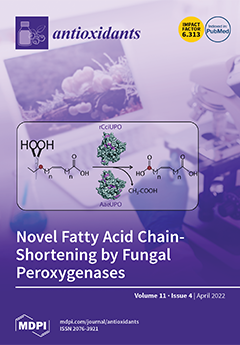Helicases function as key enzymes in salinity stress tolerance, and the role and function of
PDH45 (pea DNA helicase 45) in stress tolerance have been reported in different crops with selectable markers, raising public and regulatory concerns. In the present study, we developed
[...] Read more.
Helicases function as key enzymes in salinity stress tolerance, and the role and function of
PDH45 (pea DNA helicase 45) in stress tolerance have been reported in different crops with selectable markers, raising public and regulatory concerns. In the present study, we developed five lines of marker-free
PDH45-overexpressing transgenic lines of rice (
Oryza sativa L. cv. IR64). The overexpression of
PDH45 driven by CaMV35S promoter in transgenic rice conferred high salinity (200 mM NaCl) tolerance in the T
1 generation. Molecular attributes such as PCR, RT-PCR, and Southern and Western blot analyses confirmed stable integration and expression of the
PDH45 gene in the
PDH45-overexpressing lines. We observed higher endogenous levels of sugars (glucose and fructose) and hormones (GA, zeatin, and IAA) in the transgenic lines in comparison to control plants (empty vector (VC) and wild type (WT)) under salt treatments. Furthermore, photosynthetic characteristics such as net photosynthetic rate (Pn), stomatal conductance (gs), intercellular CO
2 (Ci), and chlorophyll (Chl) content were significantly higher in transgenic lines under salinity stress as compared to control plants. However, the maximum primary photochemical efficiency of PSII, as an estimated from variable to maximum chlorophyll a fluorescence (Fv/Fm), was identical in the transgenics to that in the control plants. The activities of antioxidant enzymes, such as catalase (CAT), ascorbate peroxidase (APX), glutathione reductase (GR), and guaiacol peroxidase (GPX), were significantly higher in transgenic lines in comparison to control plants, which helped in keeping the oxidative stress burden (MDA and H
2O
2) lesser on transgenic lines, thus protecting the growth and photosynthetic efficiency of the plants. Overall, the present research reports the development of marker-free
PDH45-overexpressing transgenic lines for salt tolerance that can potentially avoid public and biosafety concerns and facilitate the commercialization of genetically engineered crop plants.
Full article






